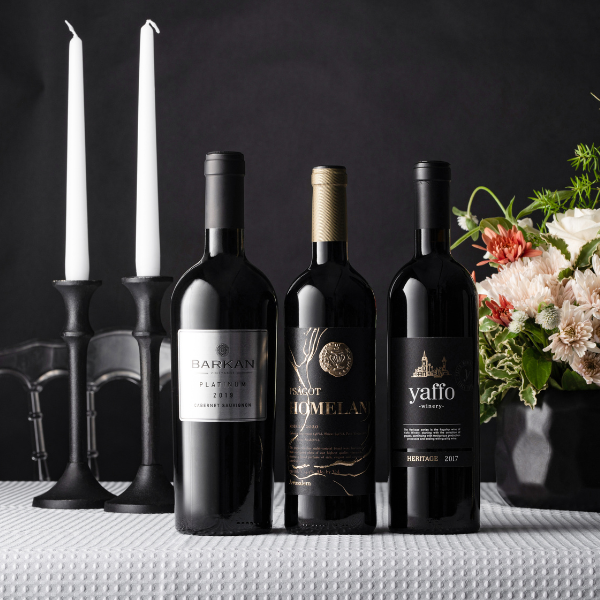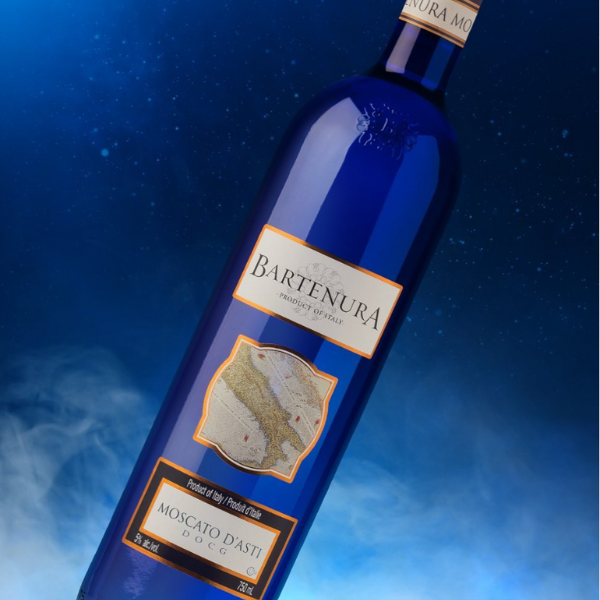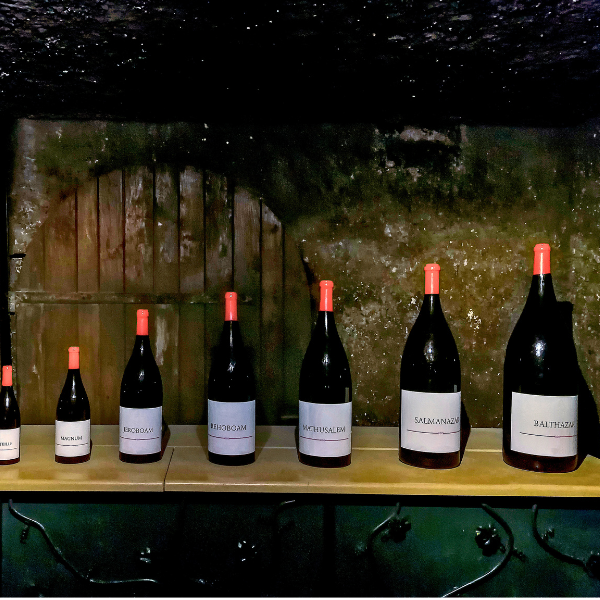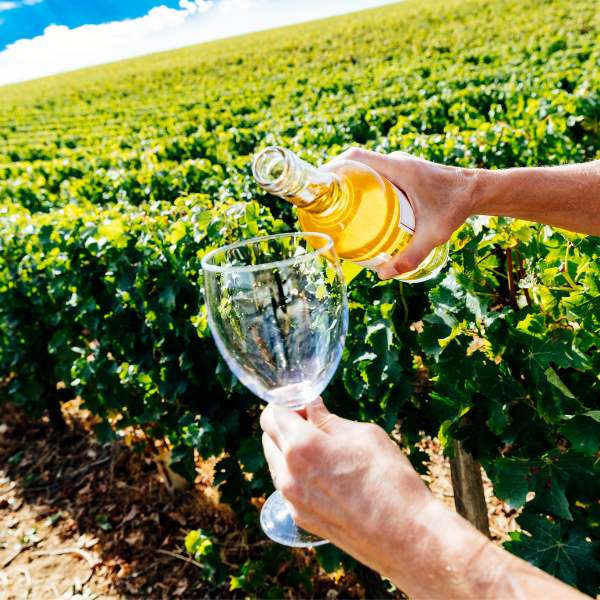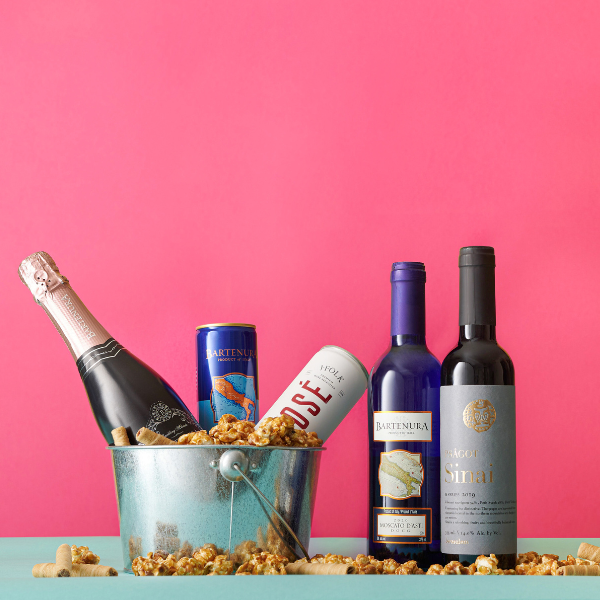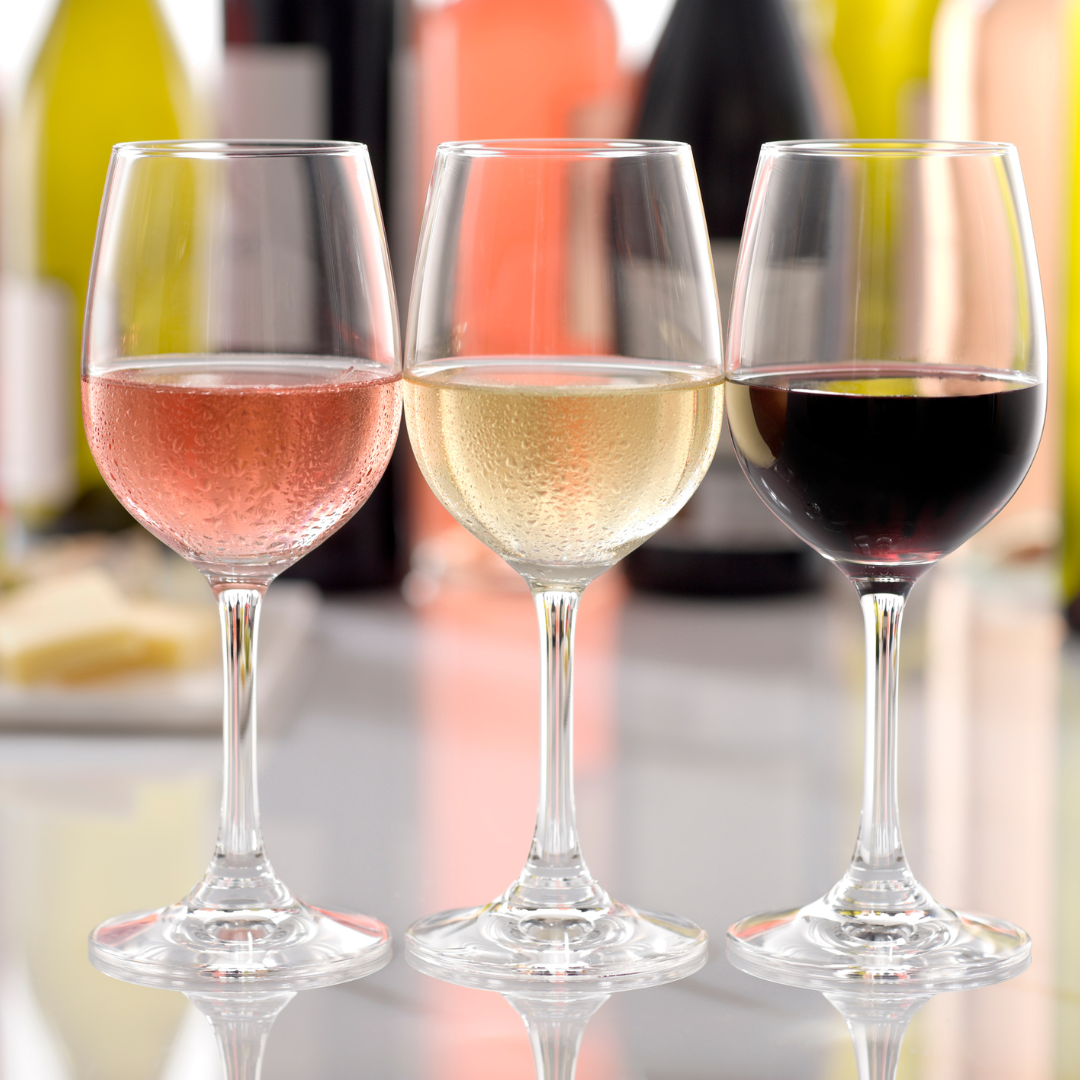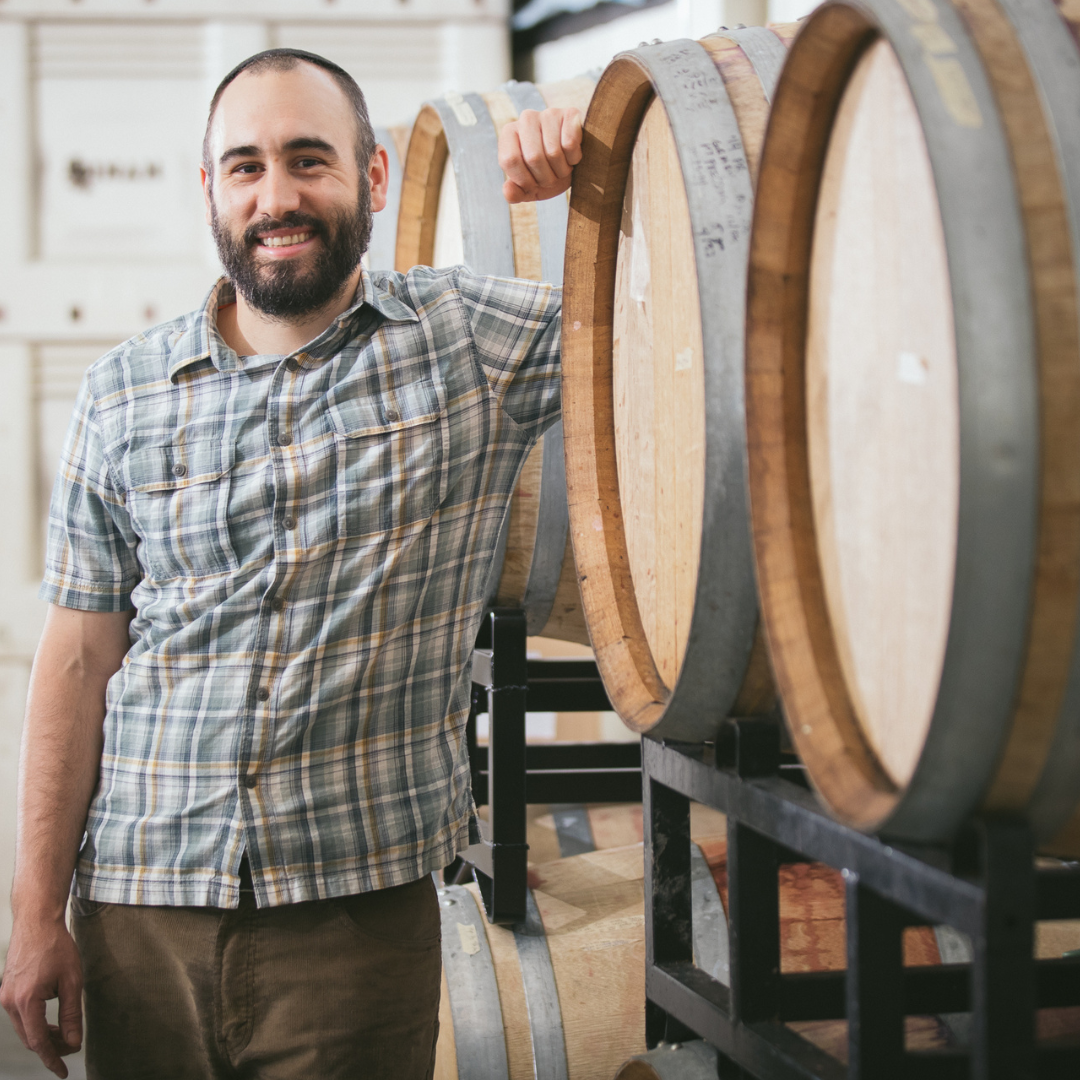The Wines of Israel
- Mar 28, 2023
By Dr. Kenneth Friedman, WSET Level 3 Candidate


The wines of Israel are continually increasing their presence on the international stage. While considered an emerging wine region, one should remember that wine has been made for many centuries in the Land of Israel. Israel’s Mediterranean climate is perfectly suited for winemaking, with hundreds of wineries now putting Israel on the map as an important wine region. The Book of Deuteronomy tells us that the “fruit of the vine” was one of the shiva minim, the seven species of Eretz Yisrael, the Land of Israel. The Bible is peppered with references to wine and winemaking, so viticulture is nothing new in Israel. In fact, archaeological digs consistently find ancient wine presses, and some have even been resuscitated into modern wineries. The story of the Great Return of winemaking to Israel mirrors the story of the mass homecoming of the Jewish people to its homeland. But that’s another story for another time.
In a country the size of New Jersey, Israel boasts a remarkable array of geographic features. From the snow-capped Mt. Hermon in the north, it is just 130 miles to the depths of the Dead Sea, the lowest point on earth. Israel is home to the arid desert region of the Negev, the humid Mediterranean coastal plain on the western border, and the mountainous region of Harei Yehuda, or the Judean Hills. Of this great differentiation in topography and climate, five major wine regions have historically been delineated. Today, new configurations for more specific and natural borders of wine regions in Israel are being deliberated but for now, they most often will be categorized as such:
- Galil (Galilee): The northernmost region, with the Golan Heights to the east and Coastal Plains to the west.
- Shomron (Samaria): Israel’s largest wine and most well-known traditional region, which includes the valleys south of the Carmel Mountain range and receives cooling breezes from the Mediterranean Sea.
- Samson: The Coastal Plain, a hot and humid region southeast of Tel Aviv making up much of the Mediterranean coast.
- Judean Hills: Contained within the Samson region, the Judean Hills region includes Jerusalem, Gush Etzion, and the Judean Foothills through the Yatir Forest.
- Negev: The barren desert area in the south of Israel, home to innovative winemaking.


The History of Winemaking in Israel
Israel is considered a “New World” wine region by today’s standards, which typically signifies wine that is fuller-bodied, with higher alcohol, lower acidity, and bolder fruit. Old World, by this definition would mean the opposite. These characteristics tend to be correlated with climate, with New World wines coming from warmer climates. Still, nothing in wine is so simple, and exceptions can be made in both categories. Another definition of Old vs. New World relates to winemaking techniques. In reality, Israel can be placed in either category, but more accurately could be referred to as neither, but rather as “Ancient World,” as the birth of winemaking occurred here while alternatively very modern technique is used in an otherwise warm climate.
The history of winemaking in Israel is as ancient as recorded history. For over 5000 years, many (many, many) generations before Bordeaux became Bordeaux, this little plot of land has been cultivated to provide wine for both secular and religious purposes, for the enjoyment of the beverage and for the sacrament. In many ways, Israel should be considered the oldest and original wine region in the world. This area of the world was the preeminent region for at least two thousand years. The Old Testament mentions the word, yayin, over 130 times, with its first mention as Noah would immediately plant grapevines following the Great Flood. The Book of Numbers tells of Spies returning from the Promised Land with clusters of grapes so large, they were carried on a pole. Carmel Winery uses a depiction of this event as their logo. Archaeological digs continually find remnants of an extensive wine industry from ancient times. King David was said to have had vast cellars of wine and men to maintain them.
The Roman destruction of the Second Temple laid waste to Jewish winemaking in the Holy Land and the Muslim conquests of the 7th century fully ended viticulture with the uprooting of vineyards due to Mohammed’s prohibition of alcohol.
To this day, wine is inextricably linked to Jewish religious rites, with use at circumcisions and weddings, a prominent role at the Passover seder, and in all holiday meals. A blessing over wine is made to begin the first Sabbath meal, as well as the second, and the Havdalah service concluding the Sabbath is said over a cup of wine. Wine is the marriage of the spiritual and earthly.


Modern Winemaking in Israel
Fast forward to 1848, one hundred years before modern Israeli independence. The first recorded winery in Palestine dates to this year, when Rabbi Yitzchak Galin opened a winery to supply the poor Jews of the Old City with wine for religious purposes. Galin would marry the daughter of wine shop owner Aaron Shor and would adopt the Shor family surname for use of the Turkish permit allowing for the creation of a winery, which would be known as Shor Brothers. Today the Shor family still produces wine in Israel under Hacormim, Arza, and Zion Wineries. Shor is known to have influenced Sir Moses Montefiore and Baron Edmonds de Rothschild to invest into winemaking in Israel in the 19th century. Beginning in 1882, Baron Edmond de Rothschild, a leading proponent of the Zionist movement, and hailed as the “Father of the Yishuv” by David Ben Gurion, and the “Known Benefactor,” for his generous poorly-held-secret philanthropy, sent France’s best agronomists to study the land of Palestine. Barons Edmond would become the benefactor of Rishon LeZion and Zichron Ya’akov (named for his father, Baron James Jacob de Rothschild). Rothschild’s viticulturists would travel to Palestine to plant vineyards, and Rothschild would build wineries in Rishon LeZion and Zichron Ya’akov. Rothschild would invest a whopping 11 million francs in the founding of Carmel Winery in 1895, a huge sum with the intent of building viticulture as a primary form of agriculture in pre-Israel Palestine and to sell the wines of Rishon LeZion and Zichron Ya’akov. Consider the fact that in 1869, Baron James de Rothschild bought the famed Chateau Lafite for 4 million francs for the full scale of the investment in the founding of Carmel.
Even with this modern resurgence, and with more than a dozen commercial wineries by Israel’s founding in 1948, until the 1970s most of the wine made in Israel was more rudimentary table wines or sacramental in purpose. It was in the early 1970s that Bordeaux varieties began large-scale production for export. In 1983, the Golan Heights Winery was founded, and the cooler climate of the Golan coupled with New World winemaking techniques brought another major leap forward for Israeli winemaking. 1990 brought the birth of Barkan, which in just over three decades has become one of the largest producers of wine in Israel, and the beginnings of many of the well-known boutique wineries. Since the turn of the millennium, Israeli wine has continued to rapidly develop and evolve, with wineries blossoming across all parts of the country in all five wine regions, and with new sub-appellations. Over 300 Israeli wineries produce 40 million bottles utilizing both international and local grape varieties, with a majority (55%) of the wine being exported to the United States.


Exploring Israel’s Wine Regions
Galil (Galilee):
The beautiful Galilee region is subdivided into the Upper Galilee, the Lower Galilee, and the Golan Heights, and drew international attention to Israel with award-winning wines. The region sits on volcanic soil, and boasts a cooler climate, with higher relative rainfall, and rocky elevations. This combination of factors allows for high quality grapes that retain higher acidity with decreased ripeness. The Galilee itself has varying soil types including clay, chalk and volcanic soil, and in a very short time has become the second largest wine-producing region in Israel, owing to its particular climate.
Among the larger stakeholders in the Galilee such as Barkan and the Golan Heights Winery are many other notable wineries such as Dalton, Or Haganuz, Tabor, Jezreel Valley, and others. One such winery in the Galilee is Tulip Winery, established in 2003 in Kfar Tikvah as a winery with a vision to not only produce top quality wines while helping to support and engage the community of individuals with special needs. Netofa Winery, led by trailblazing winemaker Pierre Miodownik, who began the winery in 2005 at the foothills of Mount Tabor, crafting quality wines inspired by France’s Rhone Valley. Netofa focuses on varieties well-suited to the Lower Galilee region’s climate such as Syrah, Mourvedre, and Roussanne, optimizing the potential of these varieties.
Shomron (Samaria):
Located just south of Haifa, the Shomron is made up of the Northern Coastal Plain, Mt. Carmel, Menashe Hills, and Shomron Hills. Sitting southwest of the more famous Galilee, Shomron is the largest region and holds significant historical heritage as the site of Baron Edmond de Rothschild’s investment into Israel at Mount Carmel in 1882. Rothschild’s legacy remains well-known to this day, and Shomron continues to be an important region for wine. Popular wineries in the region include Gva’ot, Har Bracha, and Shiloh. The altitudes differ depending on the subregion, from 0 to 500 feet above sea level at Mt. Carmel to up to 2800 feet above sea level in the Shomron Hills. The soils are typically calcareous clay, terra rossa, limestone, and chalk soil and the climate is Mediterranean with cooling breezes off the Sea.
The town of Rechelim is home to Tura Estate Winery, established in 2003 by Vered and Erez Ben-Saadon. Just six months after they married, the Ben-Saadons invested everything they had to buy 20 square kilometers for vineyards. The Ben-Saadons chose Rechalim as a home for their family and winery with the love of the land ingrained deep in their hearts.


Samson:
Comprising the Central Coastal Plain and the Judean Foothills, Samson has a hot and humid Mediterranean climate. The soils are made up of alluvial, sandy, clay loam, and terra rossa and the most popular grape varieties are both classic southern French varieties such as Carignan and Grenache, with more international varieties such as Cabernet Sauvignon, Merlot, Chardonnay, and Sauvignon Blanc. The hot Central Coast climate necessitates the need for irrigation, but the rainfall’s concentration in the winter months is useful in negating many diseases typical to humid regions. The Judean Foothills are a popular site for many wineries due to its higher elevations with a greater diurnal temperature variation (the difference between the daytime and nighttime temperatures).
Ghito Winery, in Hod Hasharon, is a wonderful example of an Israeli boutique winery begun with the dream of tech professional, Malkiel Hadari. Hadari, a lifelong resident of Hod Hasharon, began making wine in his grandfather’s house, when he was bitten by the winemaking bug. Soon enough Hadari and his wife enrolled in courses on winemaking and took the plunge. Hadari uses local varieties of grapes including Syrah, Marselan, and Grenache.


Judean Hills:
Ranging from the mountains north of Jerusalem through Gush Etzion to Yatir Forest, and south of Hebron, the Judean Hills region is home to a wealth of Jewish historical sites and is emerging as a significant viticultural area. Elevations rise up to 3300 feet above sea level in this arid region. The climate is continental and though the region is decidedly close to the equator at a latitude of just 31 degrees north, the elevations allow for great quality viticulture. The large diurnal range allows for good acidity in the grapes and consistent freshness. The stony terra rossa soils on a bedrock of limestone allow for excellent drainage. It is in the Judean Hills that world-class Israeli wineries such as Domaine du Castel, Flam, and Yatir reside.
Eli Shiran is the owner and winemaker of the eponymous winery, Shiran, which was founded in 2012 in the Shiran home before moving to Kiryat Arba. Shiran is a tinkerer by nature and sees no reason not to blend varieties others would never attempt. Shiran Triad is a blend of Viognier, Semillon, and Chardonnay expressing the best qualities of each grape, showing a nice balance of fruit from the Chard, and acid from the Viognier, while the Semillon adds a pithy funk.


Negev:
In a country as small as Israel, it is important to note that the Negev Desert encompasses half of the square footage. And yet, the desert blooms. A blooming vineyard in a barren desert is a sight to behold, but this is the dream of Israel. Just about 15 miles from both the Egyptian and Jordanian borders, an oasis of greenery produces beautiful vines from the rocky terrain.
Soil here is sandy loam and loess and the highlands of the Negev reach upwards of 3300 feet above sea level. Rainfall is extremely low and there are vast diurnal ranges with very hot days and cool desert nights. Modern agricultural techniques are at the fore in this foreboding landscape. This is the first farming done in this region in about 2000 years.
Mitzpe Ramon is home to Nana Estate Winery, a winery becoming known as much for its wonderful wines as for its modern winemaking techniques employed in these extreme conditions. As the world becomes warmer, the international winemaking community looks to wineries such as Nana for innovation. In a region with such scarce water resources, drip irrigation is utilized to give exacting amounts to vine roots. European vineyards have long banned irrigation but recently have begun decreasing these restrictions owing to necessity due to higher temperature and lower rainfall. Wineries such as Nana possibly hold the key to the future of winemaking.


The Future of Israel Wine
Galil (Galilee):
In just a few generations, Israel has made a name for itself on the international stage, but clearly has just begun to, ahem, scratch the surface of the grapeskin. As Israel begins to move away from international wine varieties and plants more Mediterranean varieties it is learning to cope with the oft-picky consumer’s laser focus on wines with which they are familiar. Most wine buyers fear venturing into the unknown, and wineries which are businesses like any other are influenced to create what will sell. Thus, we continue to see the preponderance of Cabernet, Merlot, and Chardonnay first introduced by Baron Edmond de Rothschild. While these varieties indeed produce great wines in Israel, Israel’s Mediterranean climate is more akin to grapes that would (or could) really shine here, such as the Rhone varietals we mentioned above. Some wineries, such as Barkan, Jezreel, Netofa, Recanati, and Vitkin have spearheaded this movement. Certain indigenous grape varieties such as Argaman, Bittuni, and Hamdali Jandali were found in wild vineyards around Israel, and resuscitated to create interesting wines autochthonous to this very land. The future is bright for Israel’s booming wine industry, increasingly showcasing the harmonious blend of extracting the best from ancient terroir and innovative practice.
Dr. Kenneth Friedman is a wine writer and consultant. He produces and consults on unique food and wine tastings and utilizes his years of experience to create memorable, exciting events. He maintains a column on kosher wine, food, and spirits on Instagram @kosherwinetastings
 Get help from an expert like Brad
Get help from an expert like Brad


